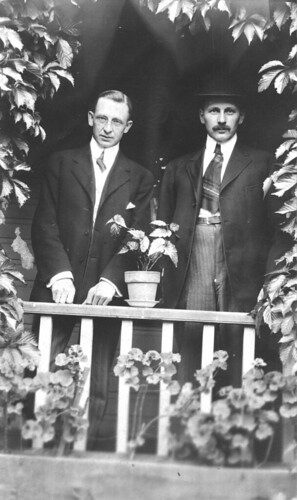
I went to Nova Scotia in May 1972, to do fieldwork for my Ph.D. in anthropology, and lived at Horton Landing for 20 years. In the first few years I traveled widely in southwestern Nova Scotia, and visited a lot of antique stores. Many of these establishments had the remains of local estate sales, including framed portraits and photo albums, and sometimes very miscellaneous collections of snapshots and tintypes. I bought thousands of pictures, long before vernacular photography was a fashionable medium, and created slide presentations of the most risible. Some photographs had limited provenance --a photographer's name, or a penciled identification on the back-- but for most there was no information at all about who the subject was, or when or where the picture was taken.
I always meant to put together a book of these found objects, incorporating what I knew or could reasonably construct from available evidence, and creating likely stories where concrete data were absent, but the right medium and audience was never quite clear enough. For the last 10 years or so I've been thinking about a Web version, and it seems that the moment has come to plunge in. The overall structure isn't clear, and will surely evolve as I scan the items and consider what there is to say about them.
I've decided that Flickr is the most effective storage and distribution medium, so I'll add a few at a time with the tag 'NS_Faces', and the results will appear on oook's glu as I upload them. The whole set will be retrievable via its Flickr tag 'nsfaces'.
This example will sketch some of what I mean to accomplish:

As with most vernacular photography, the question is ?why was this snapshot taken? ...and the answer generally has to do with capturing an event: a trip, a celebration, a rare conjunction. This one has nothing written on the back, and I know no more about it than that I bought it at Mr. Morse's antique store in Berwick NS at least 30 years ago. The sartorial splendor of the person on the right quickly named the picture: Cousin Highpockets Comes to Town.
The bodaciousness of this enterprise can be gauged from this example:
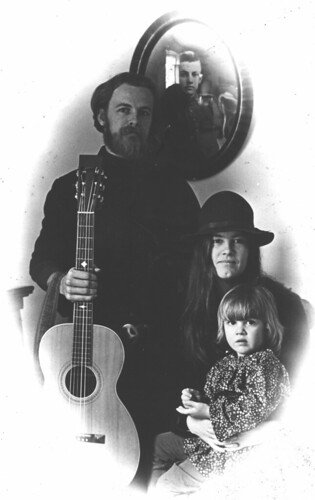
...taken by Adrian Lewis in 1973, when he was learning the basics of photography (he went on to do marvelous work, a lot of it while traveling in India ...wonder what happened to it?). The subjects: myself, my wife Betsy and daughter Kate. We, too, were Nova Scotia Faces, to be sure.
22 November
A snapshot is an instant, and Preserves the Moment for posterity. Here we have two women in fancy dresses, standing in a dusting of snow:
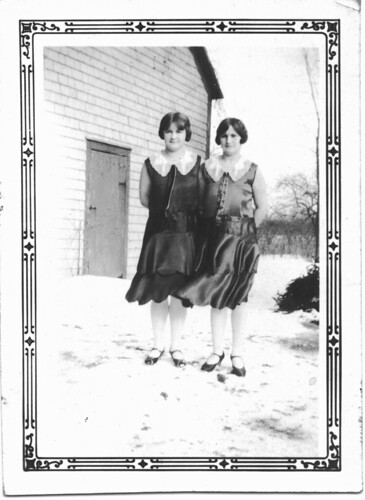
The wind came along just as the shutter was pressed, and the satin is forever caught in flight. My reading of this is that the day is Easter Sunday, the Family has gathered for Easter Sunday Dinner, and pictures had to be taken.
Another side of the snapshot as a medium is the composition, which often privileges the person over the object, as in this enigma:
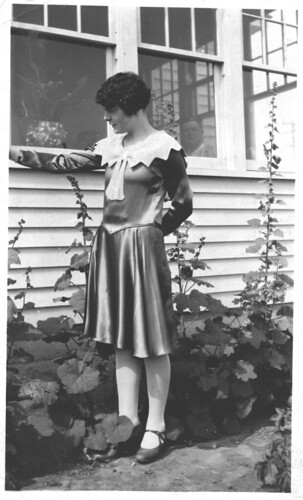
There's the further curiosity of the man in the window, behind the woman's left shoulder.
23 November
The Corn Boil is a Nova Scotia institution, an event that can only take place during about 3 or 4 weeks of every year. This picture is an epitome of the event (held in a "cottage", as indicated by the stud-wall construction and by the array of things hanging between the studs), but with a heterogeneous cast of participants.
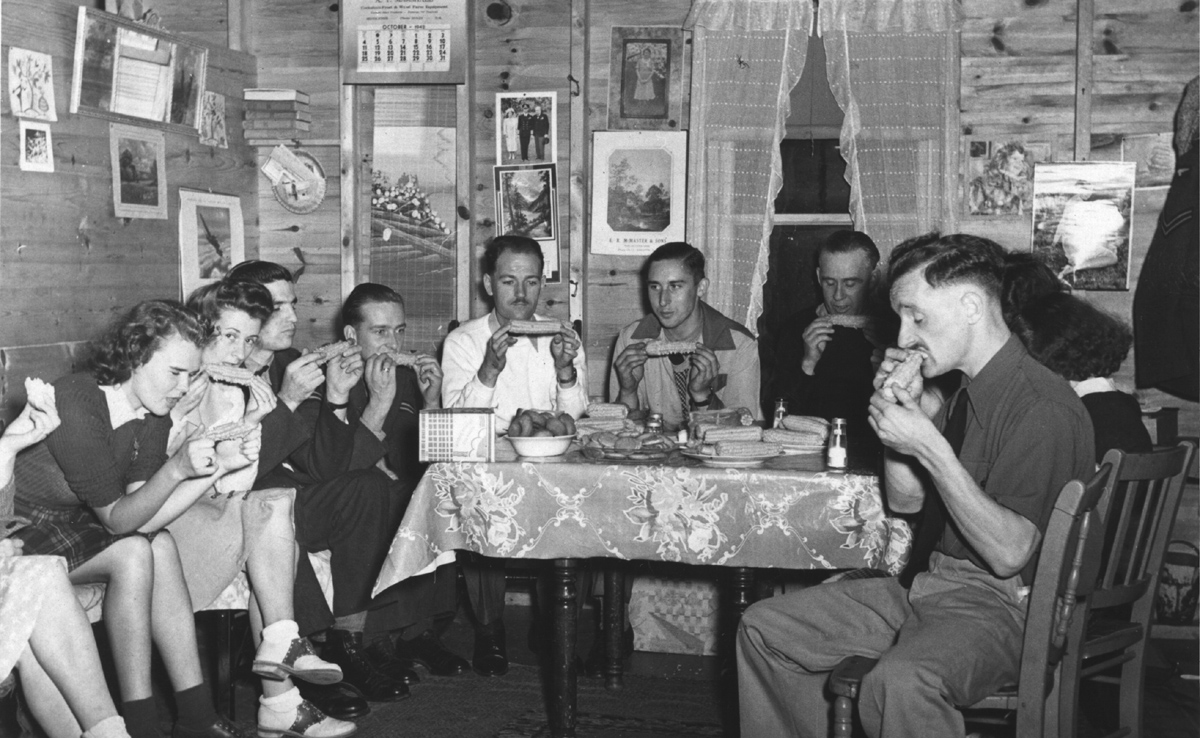
The snapshot is from a collection from Kingston, in the middle of the Annapolis Valley, which was the nearest town to RCAF Station Greenwood, a training center for the Royal Air Force Bomber Command (see Commonwealth Air Training Program).
The details are delicious. Consider these:
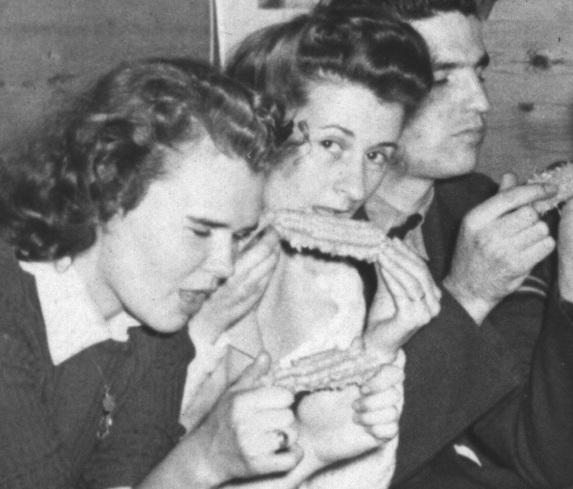
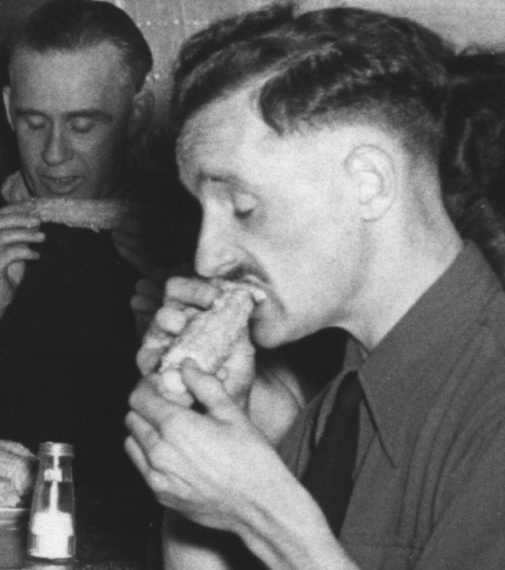
The two women are Nova Scotians who know how to eat corn. The man in the picture on the right has clearly never eaten corn before --other evidence from the collection of photographs tells me that he is Jackie Smee, one of the RAF trainees. Another detail captures a Brit about to take his first bite:
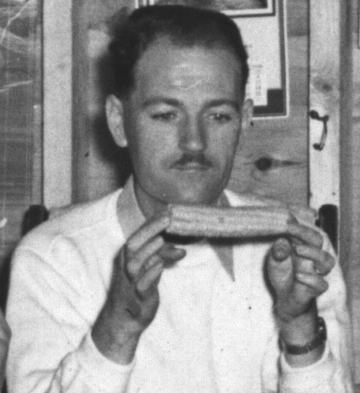
The calendar on the wall is for October 1942, but I suspect that this picture was taken in September 1943 (corn is simply not available in Nova Scotia in October). There's a picture of King George VI with Queen Elizabeth (the Queen Mum) and Winston Churchill. And this detail of shoes is a whole story in itself:
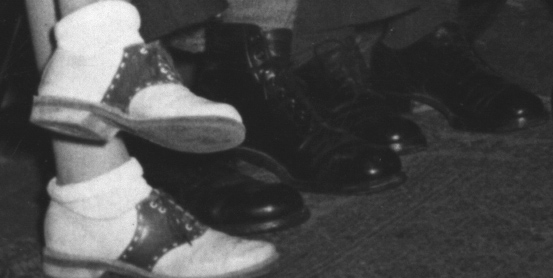
23 November
Two more in the Moments Preserved series:
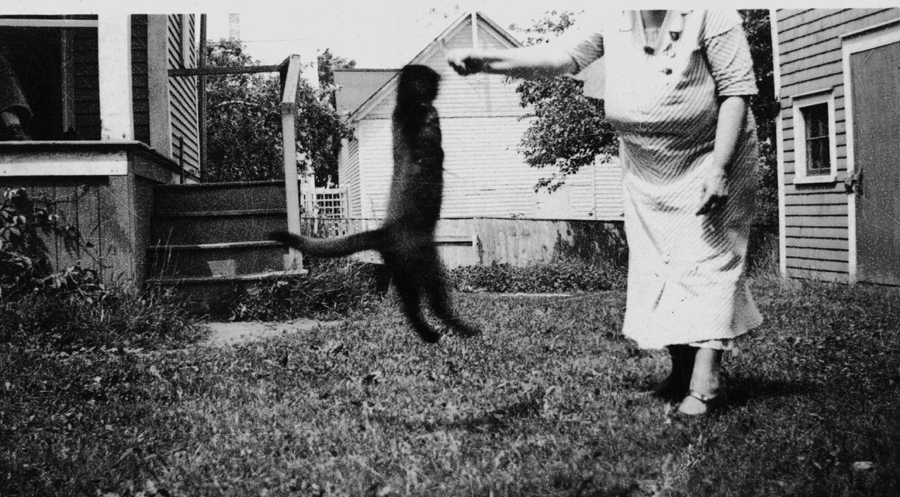
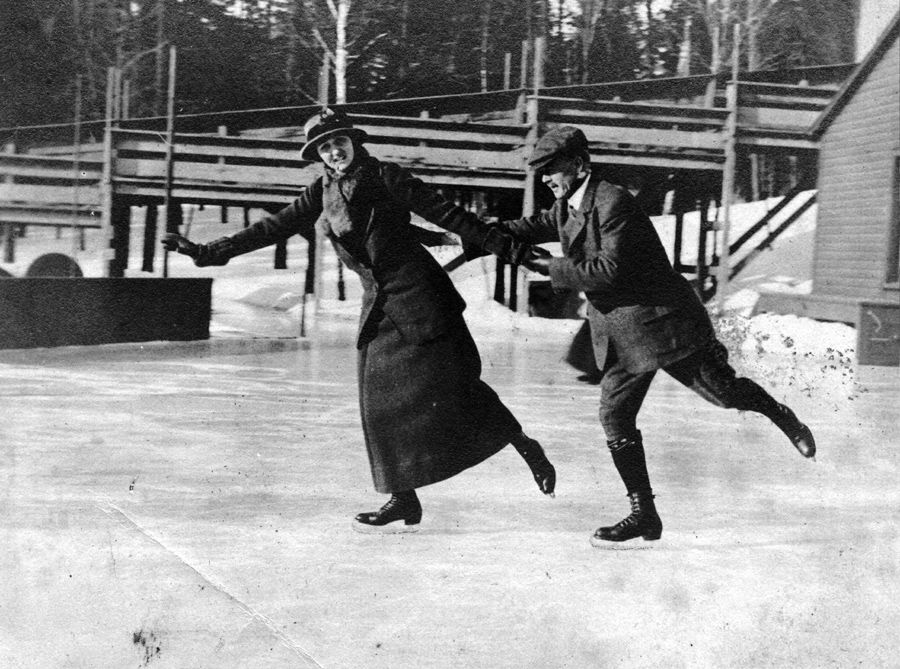
Both are full-frame, though that's more of an interesting issue in the first of the pair. The snapshot was kept despite the mistress's missing head, precisely because the cat is the subject. Still, there's enough of the mistress to leave an impression.
The skaters are gliding forever, in a sort of perfection that one hopes for (did they both fall 10 seconds later?) and the shot is perfectly framed to capture their vector on the ice.
Another genre, found in every era, is The New Car, beautifully epitomised in this tintype, bought at Mrs. Oickel's in Green Bay, Lunenburg County.
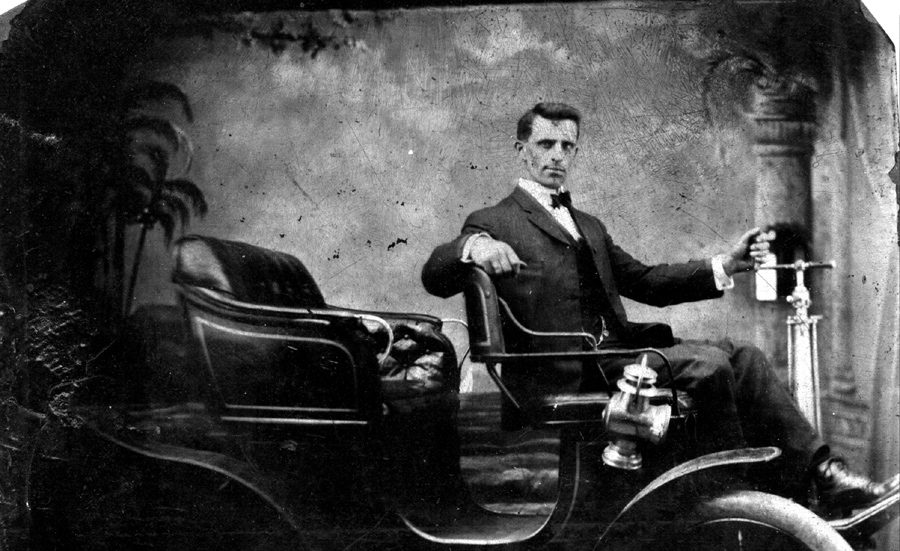
I surmise that this splendid gentleman was the proud owner of one of the first horseless carriages in Lunenburg --an alternate title for this one is "The Sin of Pride".
24 November
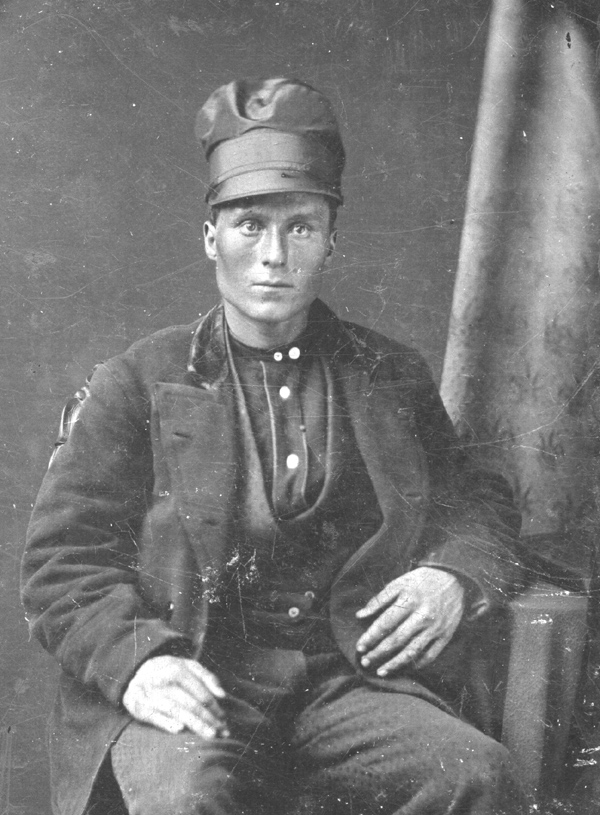
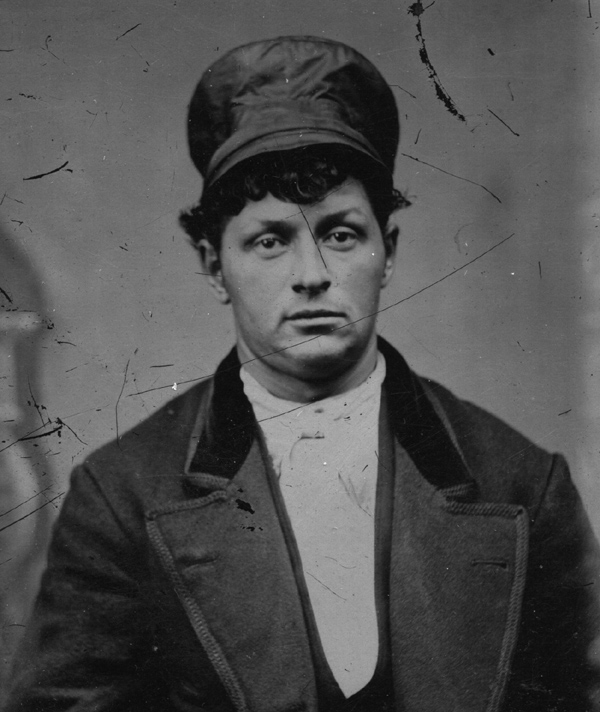
Nova Scotia's regional subdivisions are quite distinct, and in most cases still reflect the 18th century history of settlement, though with modifications induced by 20th century migrations. In the 19th century it's quite clear that nearly all residents of Lunenburg County were descendants of dependable Protestant migrants from the German Palatinate. These two gentlemen wear very distinctive headgear, which I think of as "Lunenburg hats", though I have yet to find anything to confirm the supposition that the style is unique to Lunenburg, but I have a number of tintypes from Mrs. Oickle's that feature similar lids. Here's one of them:
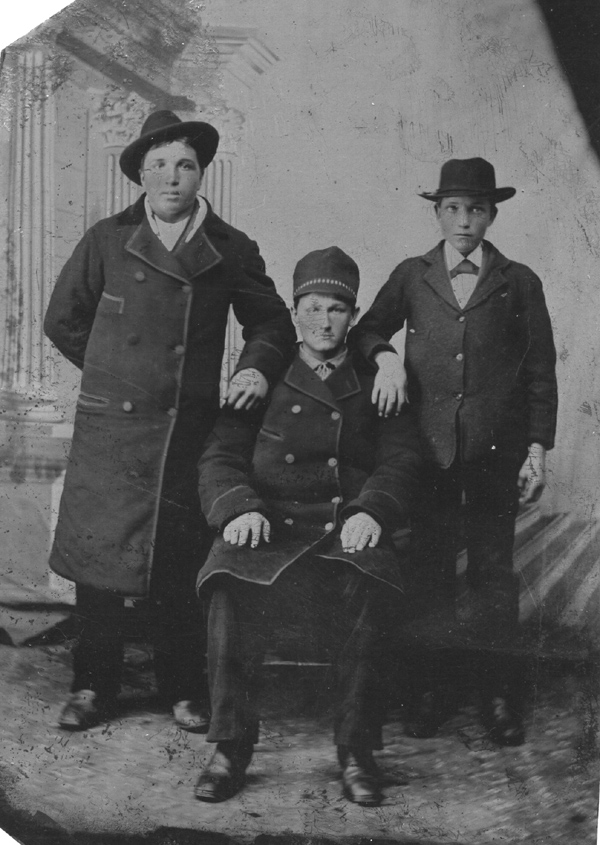
27 November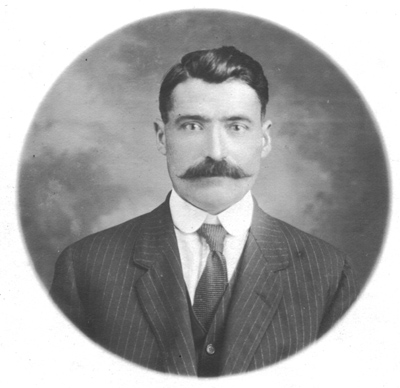
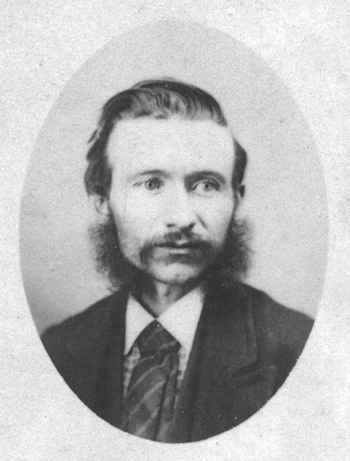
This pair addresses juxtaposition and character. The two images have nothing to do with each other historically (as far as I know, there's no other relation between the two people except that they're Nova Scotians and their portraits fell into my hands...), but to my eye they epitomise the sorts of judgements people make. The gentleman on the left seems to radiate Success, and the poor schlub on the right is surely the embodiment of Failure. Or do I read too much into what we see before us? There's more to say about this...
Something else altogether here: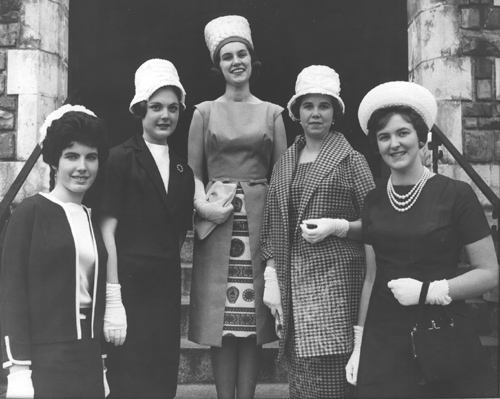
Every June the Annapolis Valley (which was, until September 1939, the World's Largest Exporter of Apples ...whereby hangs a Tale) holds its Apple Blossom Festival. And you can't have a Festival (especially a Spring Festival) without a bevy of nubile females to embody ...well, you know. These are the Queen and her Princesses from an Apple Blossom Festival in the late 1950s or so, complete with the Hats and Gloves that were obligatory in that era. Can you guess which is the Queen? That was easy. And don't you wonder what happened to each of them? There, you're getting the idea. You've been sucked in.
But this page is getting to be too long, and I'll continue it with others... and also try a wiki version with some different content.